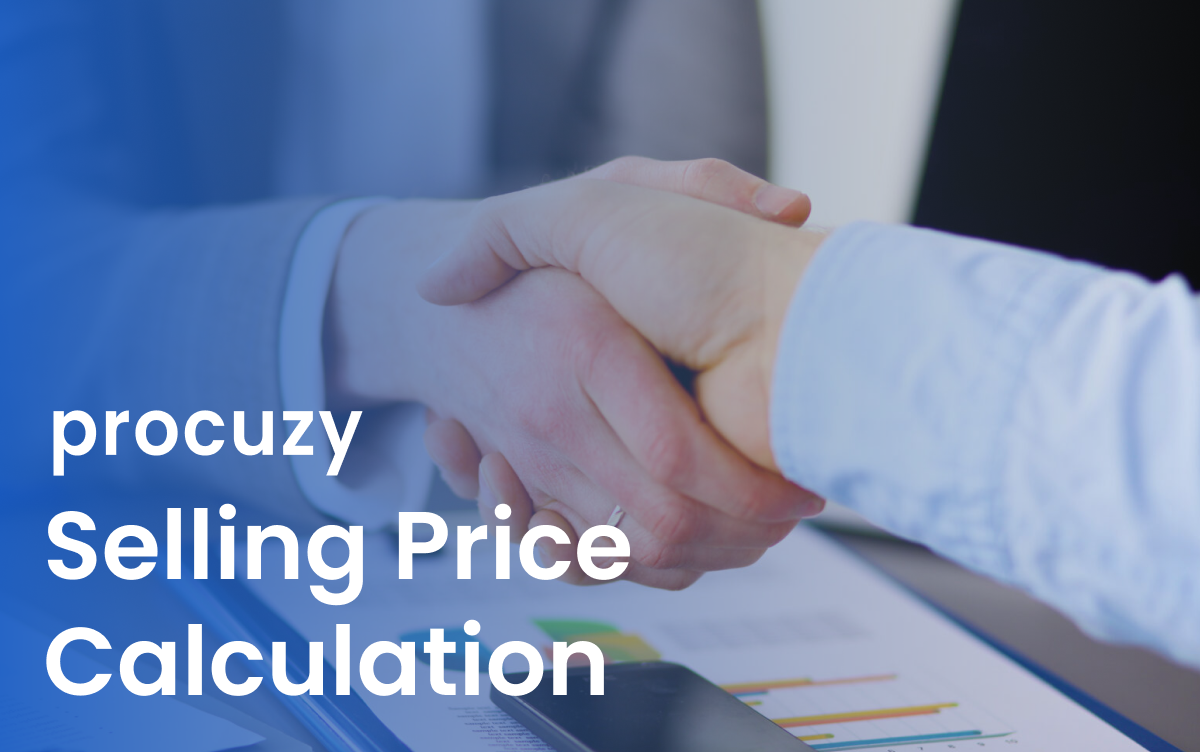
Are you maximizing the profitability of your products? Establishing the perfect selling price is not just about covering costs—it's about setting a price that propels your business towards success. According to a recent study by Harvard Business Review, 54% of customers are willing to pay more for a personalized product they feel connected to.
To determine the optimal selling price, it's crucial to consider various factors such as production costs, market demand, competitor prices, and the perceived value of your product. Striking the right balance ensures that you cover your expenses while generating a healthy profit margin for your business.
In this blog post, we will delve into the various factors that need to be considered when calculating the selling price for your products.
Understanding Costs
Before setting a selling price for your products, you must have a clear understanding of all the costs associated with producing and selling them. These costs can be broadly categorized into two main types: fixed costs and variable costs.
Fixed Costs
Fixed costs are expenses that remain constant regardless of the quantity of products produced. Examples of fixed costs include rent, insurance, salaries, and utilities. For example, let's say you are selling handmade jewelry. The fixed costs in this case might include the rent of your workspace, the salary of your employees, and the monthly insurance premium.
Variable Costs
Variable costs, on the other hand, fluctuate based on the volume of products produced. These costs include raw materials, labor, packaging, and shipping expenses. For instance, let's continue with the handmade jewelry example. The variable costs might include the cost of the raw materials needed to make the jewelry, wages for the artisans, packaging materials, and shipping fees.
Strategies for Calculating Selling Price for Your Products
Determining the ideal selling price for your products is a crucial aspect of any business. Setting the right selling price allows you to cover production costs, generate a profit, and remain competitive in the market. However, calculating the selling price requires careful consideration of various factors.
Let's discuss some effective strategies for calculating the selling price for your products, along with examples.
1. Cost-Plus Pricing method
Cost-plus pricing is a commonly used strategy to determine the selling price. This method involves adding a markup to the product's production cost to establish the selling price. To implement this strategy, you need to calculate all the direct and indirect costs associated with producing the product, including raw materials, labor, and overhead costs. Then, add a desired profit margin to cover your business expenses and generate a reasonable profit.
For example, if the production cost of a t-shirt is $5 and you want a 40% profit margin, the selling price would be $5 + ($5 x 0.40) = $7.
2. Market-Based Pricing method
Market-based pricing involves setting the selling price based on the market demand and competitors' prices. This strategy requires thorough market research to gather data on pricing trends and customer preferences. By analyzing the market, you can determine the price range most customers are willing to pay for your product. Adjusting your selling price within this range allows you to remain competitive while considering your unique value proposition.
For example, if you notice that similar products in your market are priced between $20 and $25, you may set your selling price at $22 to offer a competitive price while maintaining profitability.
3. Value-Based Pricing method
Value-based pricing focuses on the perceived value of the product to customers. This approach involves setting the selling price based on the benefits and value your product offers compared to alternatives in the market. By understanding your customers' needs and preferences, you can assign a higher value to your product and price it accordingly. Value-based pricing provides an opportunity to capture the additional value you deliver to customers, increasing your profitability.
For example, if you are selling a premium smartphone with advanced features and superior performance, you can set a higher selling price compared to other smartphones in the market that offer fewer features.
4. Penetration Pricing method
Penetration pricing is a strategy commonly used by businesses entering a new market or introducing a new product. With this approach, the initial selling price is set relatively low to attract customers quickly and gain market share. The aim is to stimulate demand for the product and build customer loyalty. Once established in the market, the selling price can be gradually increased to generate more profit. This strategy requires careful monitoring of market reactions and competitors' responses.
For example, a new software company may offer their product at a significantly lower price compared to established competitors to entice customers to try their software and gain a foothold in the market.
5. Psychological Pricing method
Psychological pricing is a subtle yet effective strategy that leverages the psychology of pricing perception. This method involves setting the selling price at a level that influences customers to perceive it as more affordable or valuable. Examples include setting a price just below a whole number ($9.99 instead of $10) or using tiered pricing to create the perception of better value (e.g., offering a basic, standard, and premium pricing tier). By understanding consumer psychology, psychological pricing can help you optimize sales and improve profitability.
For example, a retailer may price a product at $199.99 instead of $200 to make it appear more affordable to customers.
6. Dynamic Pricing method
Dynamic pricing is a data-driven strategy that adjusts the selling price based on real-time market conditions and demand fluctuations. With this approach, the price can change multiple times throughout the day, week, or month. Dynamic pricing is commonly used in industries such as travel, hospitality, and e-commerce. By utilizing algorithms and artificial intelligence, businesses can optimize prices to maximize revenue and respond to market changes rapidly.
For example, a hotel may adjust its room rates based on factors like seasonal demand, occupancy rates, and competitor pricing, offering lower rates during off-peak periods and higher rates during busy periods to maximize revenue.
7. Profit Margin
In addition to covering your costs, setting a selling price that includes a profit margin is essential for the sustainability of your business. The profit margin is the percentage of the selling price that represents profit after deducting all costs. The profit margin can vary depending on your business goals, market conditions, and competition.
Markup vs. Margin
It is important to differentiate between markup and margin when setting prices. Markup is the percentage added to the cost price to determine the selling price, whereas margin is the percentage of the selling price that represents profit. Suppose the cost of producing a piece of handmade jewelry is $20, and you want to add a 50% markup. In this case, the selling price would be $30 (markup = $20 * 50% = $10, selling price = $20 + $10 = $30). The profit margin, in this case, would be 33.3% ($10 profit / $30 selling price).
Pricing Strategies
There are several pricing strategies that businesses can employ to set their selling prices. Some common pricing strategies include:
Cost-Plus Pricing: This strategy involves adding a markup to the total cost of production to determine the selling price. For example, if the total cost of producing a handmade jewelry item is $50 and you add a 30% markup, the selling price would be $65.
Competitive Pricing: This strategy involves setting prices based on what your competitors are charging for similar products. If your competitors are selling similar handmade jewelry items for around $60, you might choose to set your selling price in a similar range to remain competitive.
Value-Based Pricing: This strategy focuses on the value that customers perceive in your products and sets prices accordingly. If your handmade jewelry is made from high-quality materials and has a unique design, you might set a higher selling price based on the value customers attach to these features.
Skimming Pricing: This strategy involves setting high initial prices and gradually lowering them as competition increases. For example, if you introduce a new line of handmade jewelry that has innovative features, you might initially price it higher to attract early adopters and then gradually reduce the price as more competitors enter the market.
Conclusion
Calculating the selling price for your products is a multifaceted process that requires a deep understanding of costs, profit margins, pricing strategies, market research, and pricing psychology. By carefully considering these factors and adopting a data-driven approach to pricing, you can set competitive prices that not only cover your costs but also generate profits and drive business growth.
Effective pricing is a cornerstone of business success and can greatly influence your bottom line. So take the time to evaluate all the relevant aspects and price your products for success.


